Have you ever spotted a tiny mushroom growing directly from a pine cone? The pinecone mushroom (Auriscalpium vulgare) is a tiny treasure of the forest. It resembles a miniature periscope popping up from a buried pinecone submarine. This minuscule mushroom is easy to overlook (you really have to be looking!) and is always a treat to actually find.
- Scientific Name: Auriscalpium vulgare
- Common Names: Pinecone mushrooms, earpick fungus, fir-cone Hydnum, cone tooth, pine cone tooth
- Habitat: On conifer cones
- Edibility: Inedible
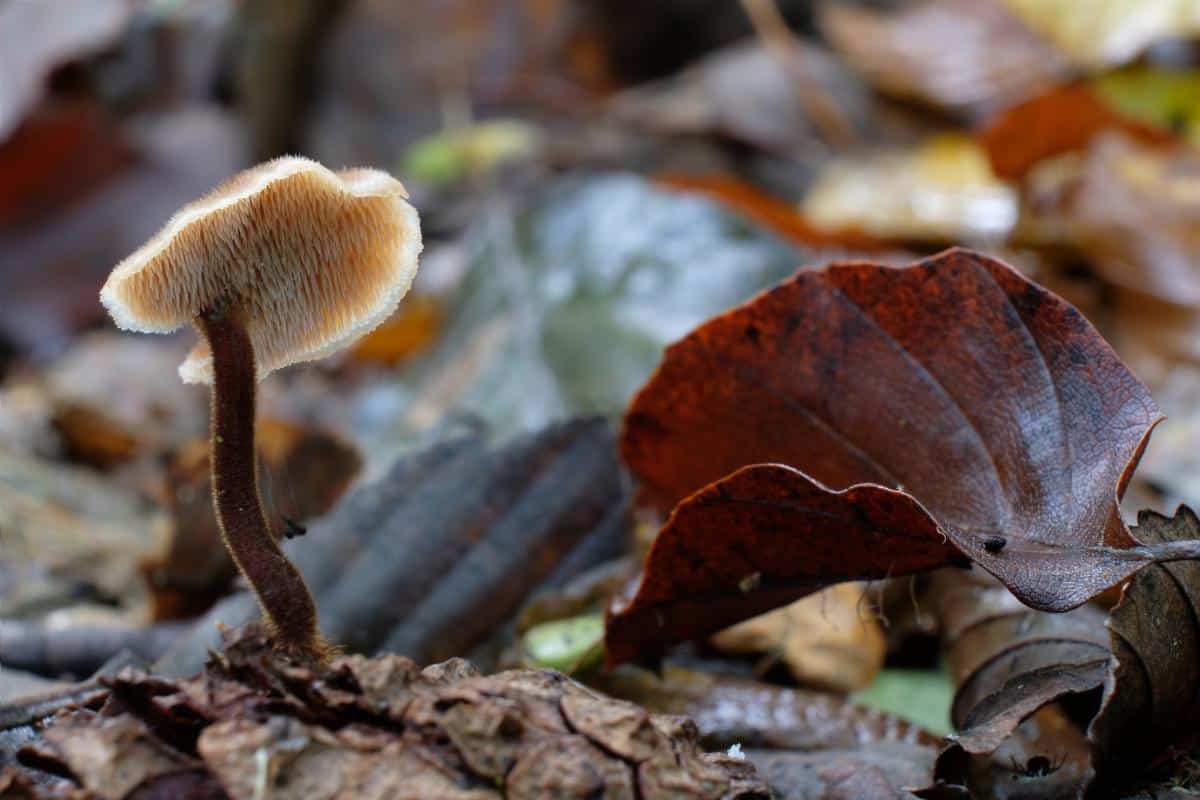
Jump to:
All About Pinecone Mushrooms
This distinctive species has specifically adapted to grow on fallen conifer cones. It has a kidney-shaped or circular cap that is covered in fine reddish-brown to dark brown hairs. The cap can turn nearly black with age. Underneath the cap, there are tiny spines instead of gills or pores.
The pinecone mushroom is a common species (its species name “vulgare” literally means “common”), but it often goes unnoticed because it’s so small and blends in with forest debris.
In 1753, the Swedish botanist Carl Linnaeus placed this mushroom in the genus Hydnum under the name Hydnum auriscalpium. This initial classification grouped it with other tooth fungi, including Hedgehog mushrooms.
In 1821, the British mycologist Samuel Frederick Gray determined that this pinecone-dwelling fungus differed substantially from other Hydnum species. Because of this, he created an entirely new genus, Auriscalpium, specifically for this distinctive mushroom. “Auriscalpium” is from the Latin and translates to “auris” (ear) and “scalpo” (to scratch). The name means “ear pick.” The species name “vulgare” translates to “common”.
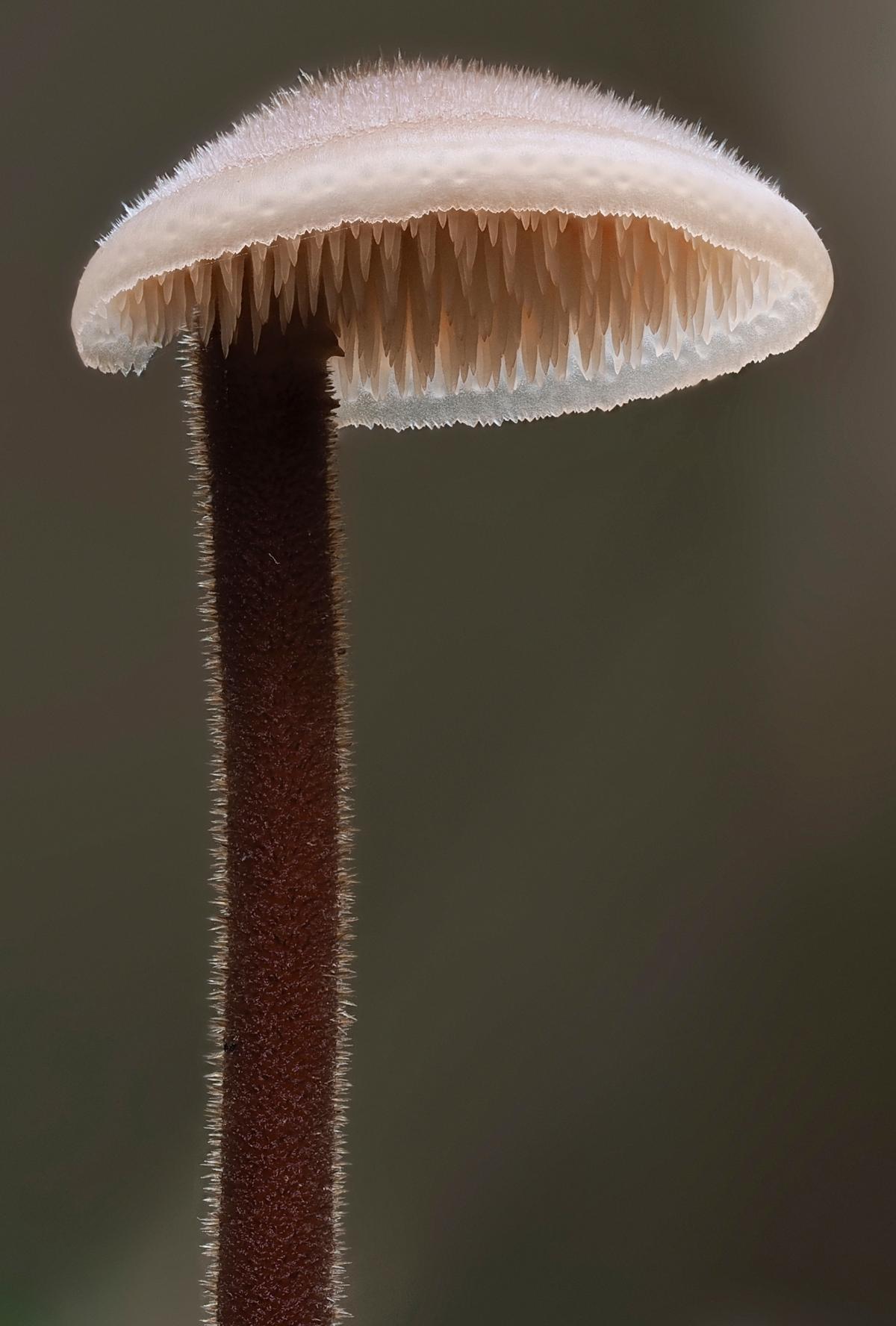
The ear-pick name refers to a small, scoop-shaped instrument historically used to remove wax and gunk from your ears. When Samuel Frederick Gray first described this genus in 1821, he referred to it as the “common earpick-stool”.
A. vulgare is the type species for its genus. The genus contains eight species.
The ear-pick fungus shares genetic connections with various taxa, including the gilled fungi of Lentinus, the pored genus Albatrellus, the coral-like Clavicorona, and the fellow tooth fungus Hericium (Lion’s Mane). All these diverse mushrooms belong to the family Auriscalpiaceae within the order Russulales—a relationship confirmed through DNA analysis.
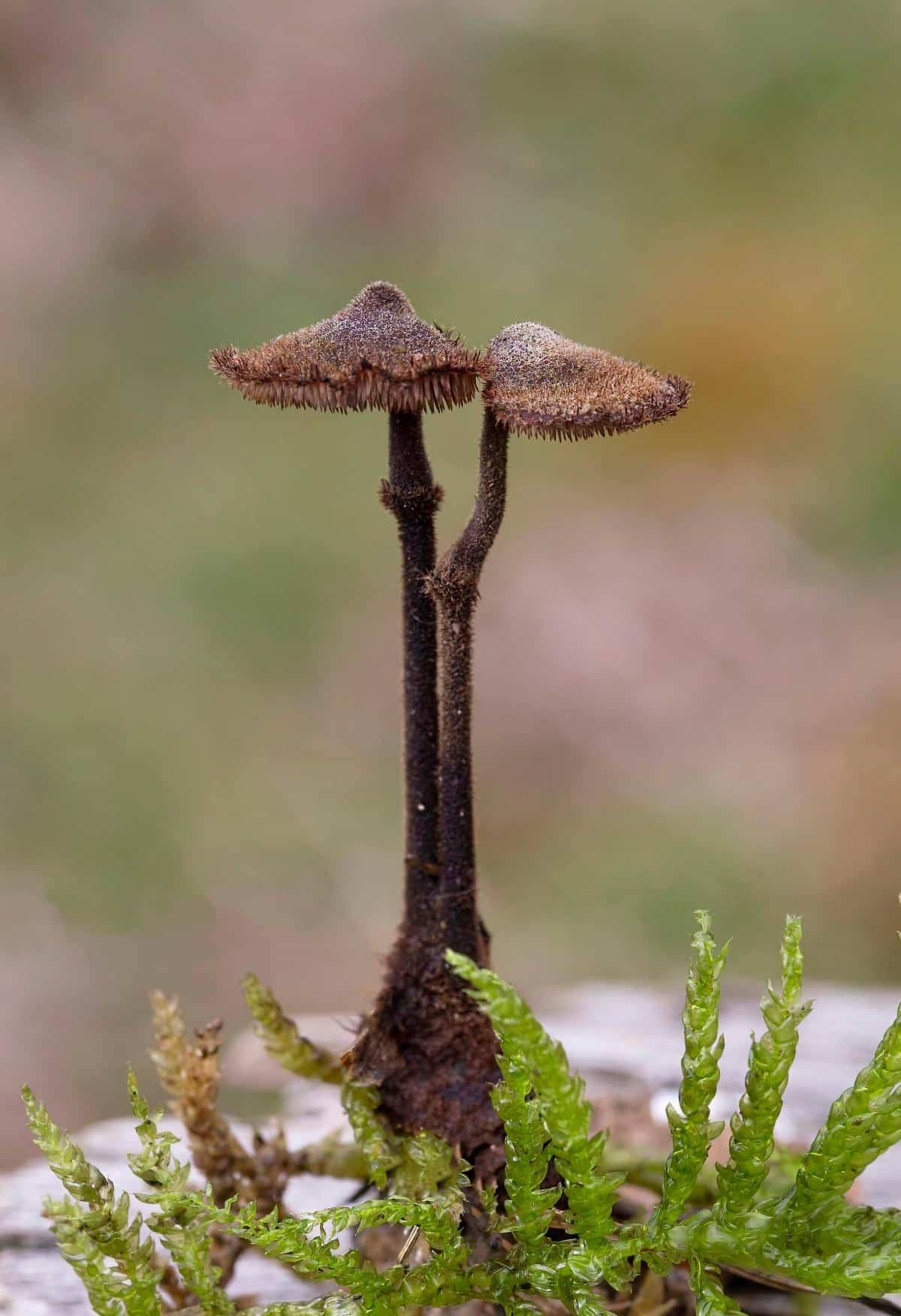
Pine Cone Mushroom Identification
Season
These mushrooms appear from late fall through early winter. In warmer climates, they can be found throughout the winter.
Habitat
The pinecone mushroom has distinct preferences for specific conifer species. In the Pacific Northwest, it grows primarily on Douglas-fir (Pseudotsuga menziesii) cones. In Europe, it favors Scots Pine (Pinus sylvestris) cones. This mushroom can also be found growing on White pine (Pinus strobus) cones. It occasionally appears on spruce cones, though less frequently than on pine or Douglas-fir.
Pinecone mushrooms tend to grow on cones that are partially or fully buried in forest duff. They don’t simply attach to visible cones on the forest floor. They often grow from decomposing cones that are almost fully decomposed into the soil. This means that the pinecone might be so deteriorated or buried that it’s hard to see.
The mushrooms grow singularly for the most part. Each mushroom always has its own stem, but sometimes, 3-4 fruiting bodies emerge from the same base.
The pinecone mushroom is widely found across North America, Europe, Central America, and Asia. In North America, its range stretches from Canada all the way south to the Trans-Mexican Volcanic Belt below Mexico City. In China’s Yunnan Province, Auriscalpium vulgare was identified as one of the dominant fungal species in mixed forests at elevations between 2,600–3,000 meters.
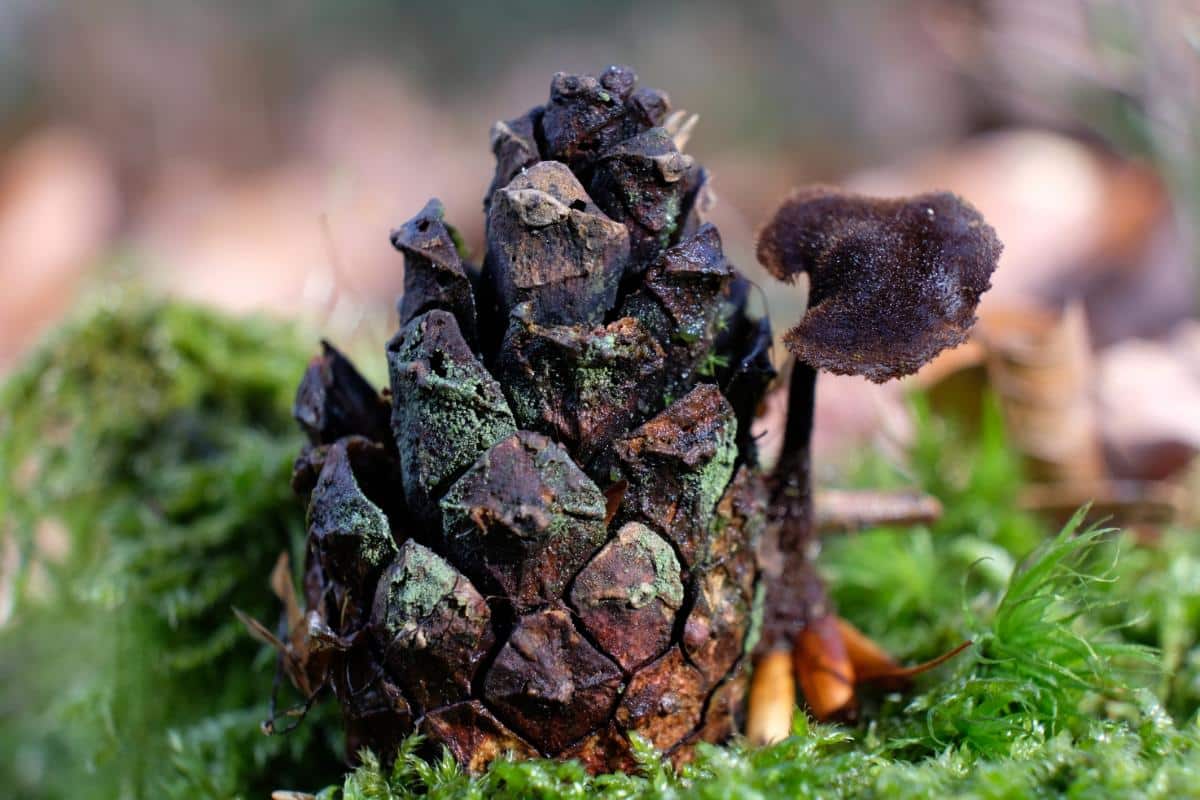

Identification
Cap
The cap is just 0.4-1.2 inches across. This tiny cap is kidney-shaped or almost circular. The cap has a densely bristly texture. It is covered in fine, reddish-brown to dark brown hairs that give it a fuzzy appearance. The edge of the cap is typically buff to light brown and lighter in color than the center. As the mushroom ages, the cap darkens almost to black.
Sometimes, the fruit bodies grow and never produce a cap.
Spines
Most mushrooms have gills or pores, but the pinecone mushroom has spines on its underside. These tooth-like spines are tiny and densely packed. At first, the spines are white or light brown. As the mushroom matures, the spines gradually turn brownish or ashy gray.
Stem
The stem of the ear-pick fungus is off-center. It is not attached to the center of the cap but rather off to the side. The off-center attachment gives it a very periscope-like appearance. The stem is tiny and thin. It is between 0.8 and 3.1 inches long and covered with the same hairiness as the cap. The stem is reddish-brown to dark brown in color.
Flesh Color and Staining
The flesh of the pinecone mushroom has two distinct layers. The upper layer is thin, compact, and black-brown. The lower layer is thicker, softer, and white to light brown.
Smell and Taste
The pinecone mushroom has no distinctive odor. Its taste is described as mild or slightly bitter.
Spore Print
The spore print is white.
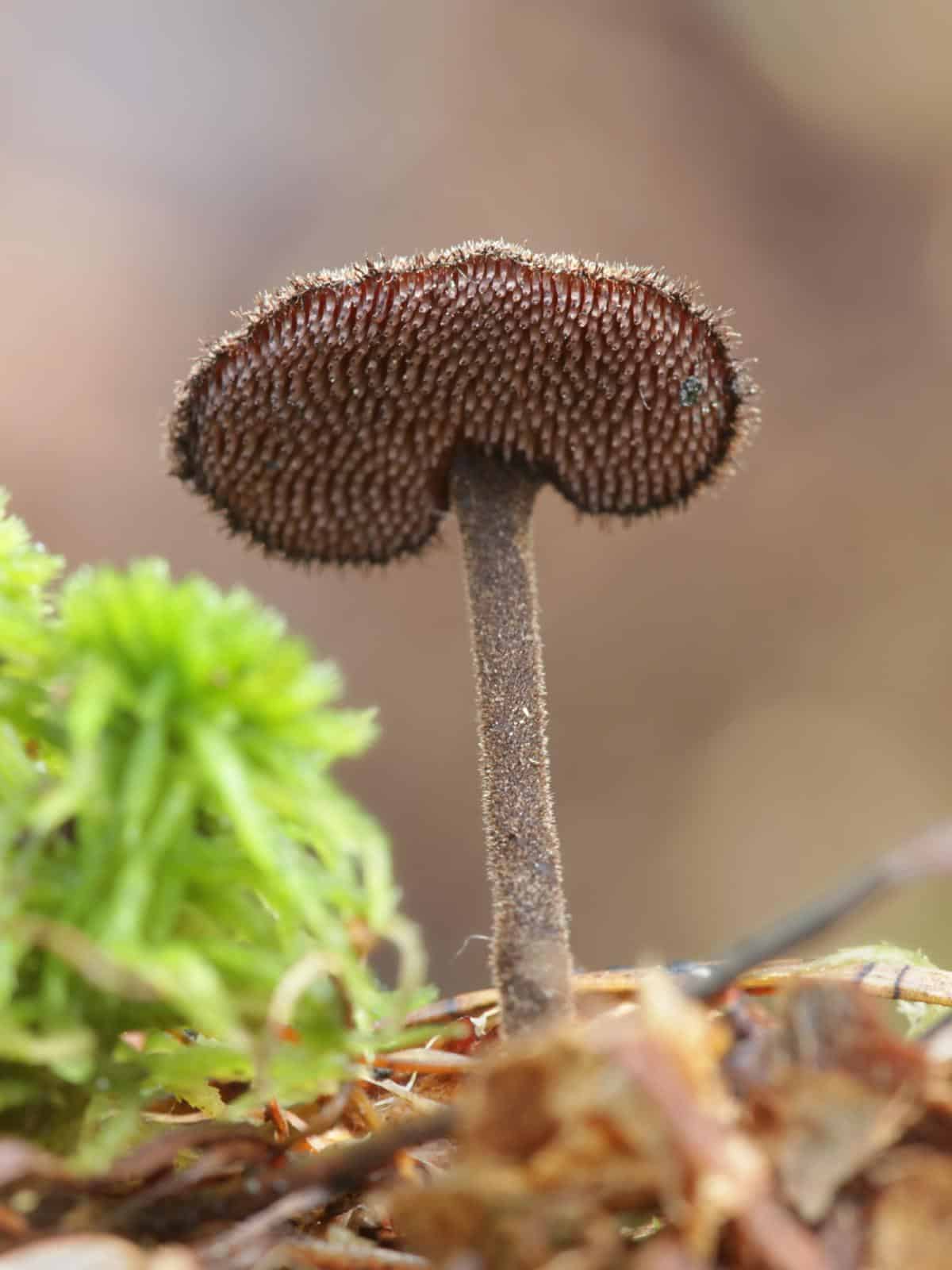
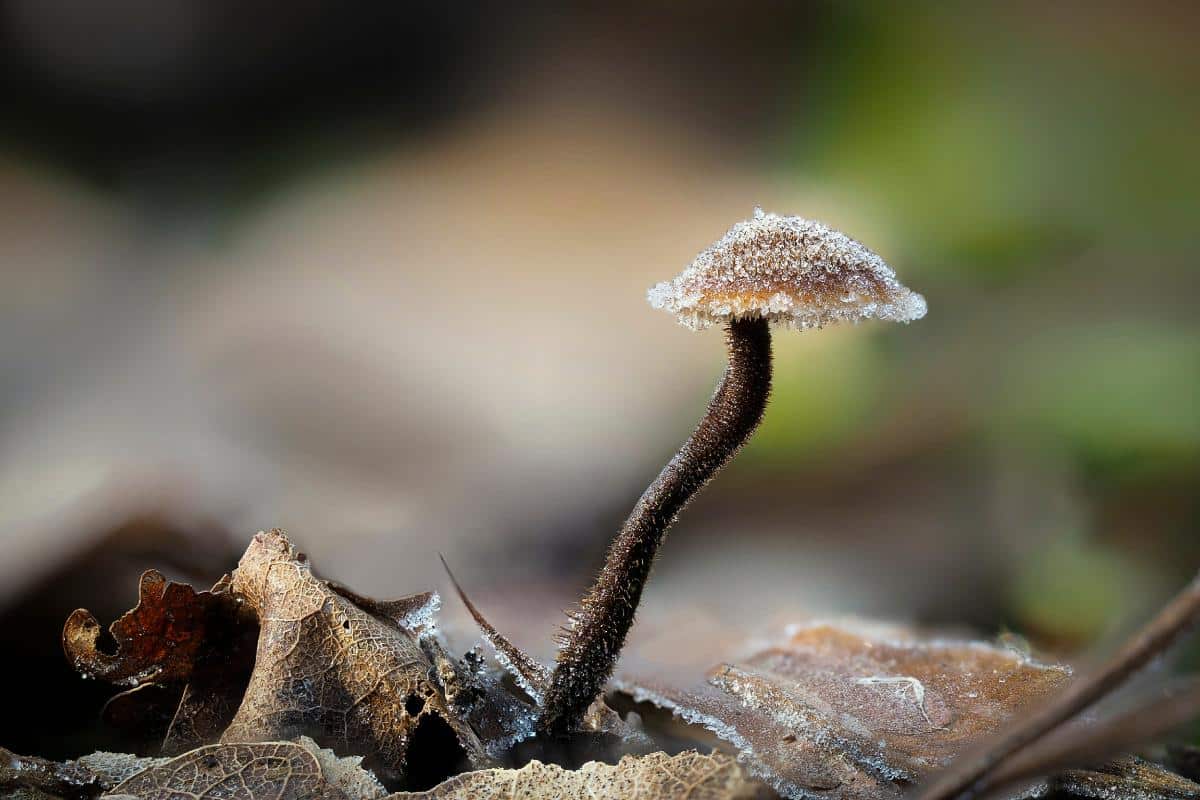
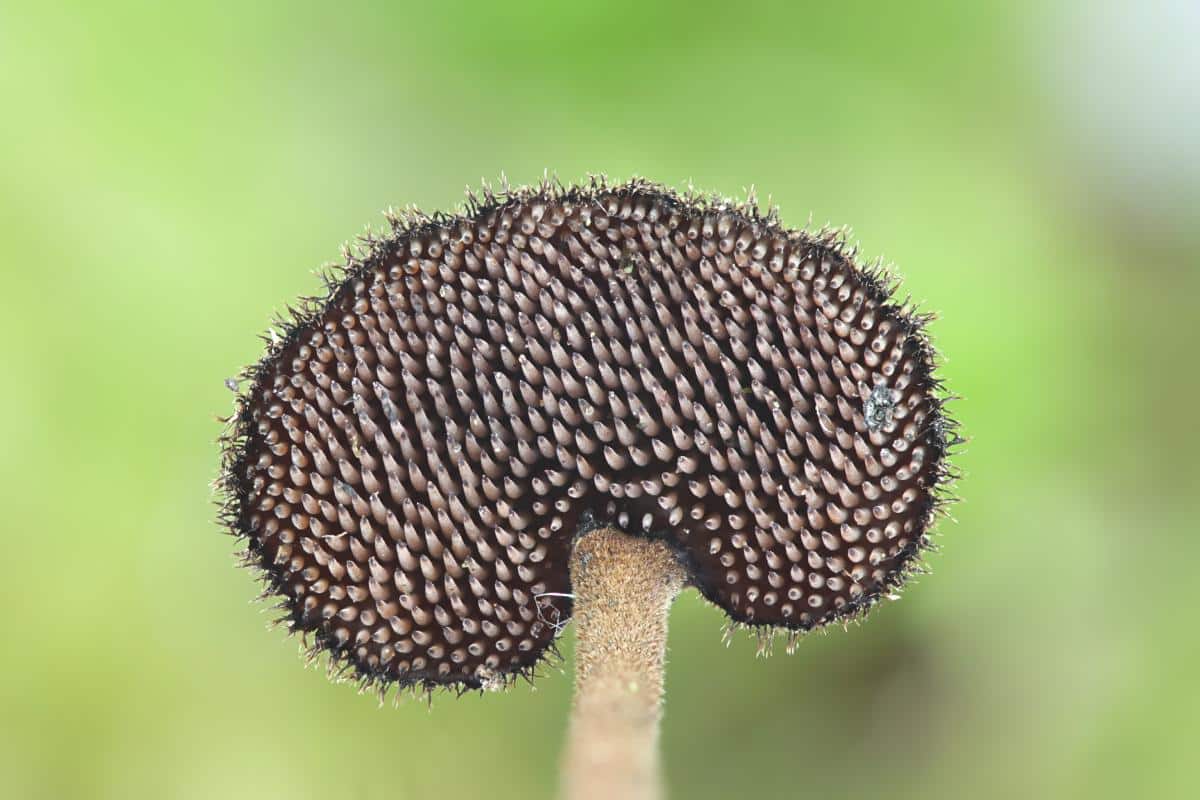
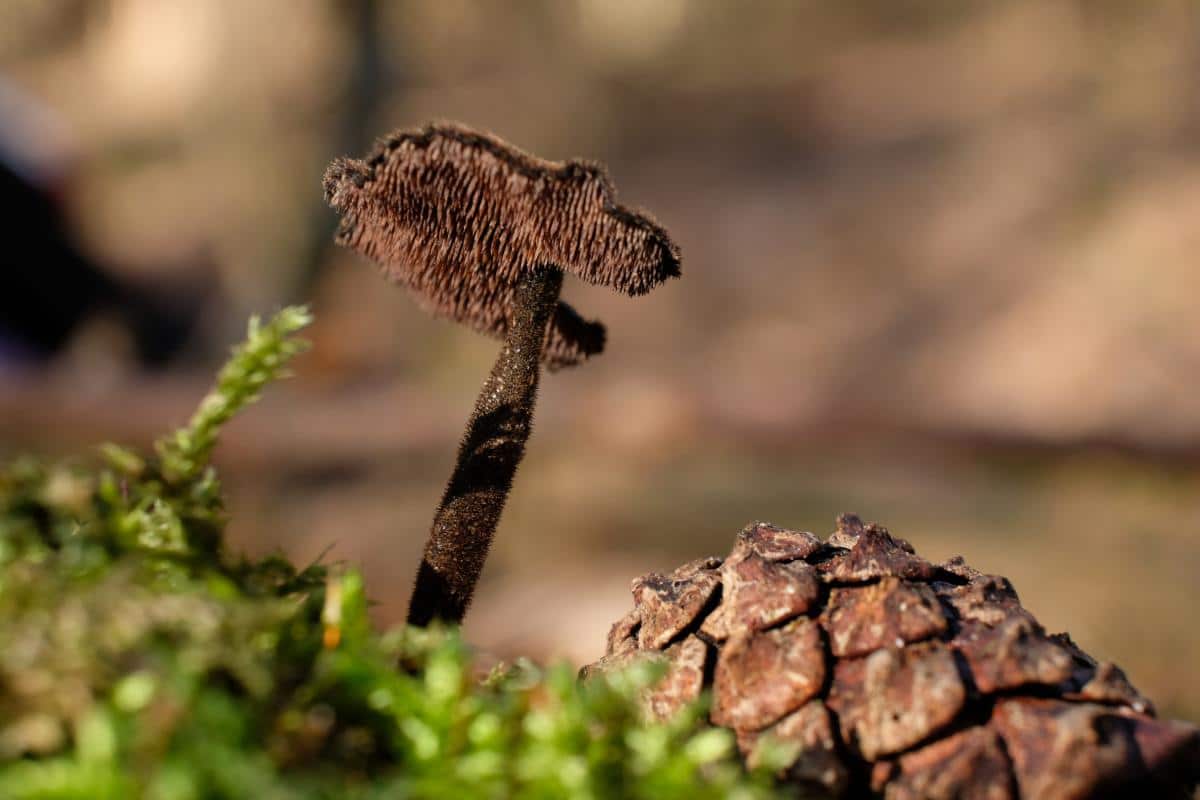
Pinecone Mushroom Lookalikes
Strobilurus trullisatus
This small mushroom also fruits on Douglas-fir cones. However, it has a more traditional mushroom shape with a central stem and gills. It also doesn’t have the distinctive dark brown, hairy texture of the pinecone mushroom. Strobilurus trullisatus is native to the Pacific Northwest.
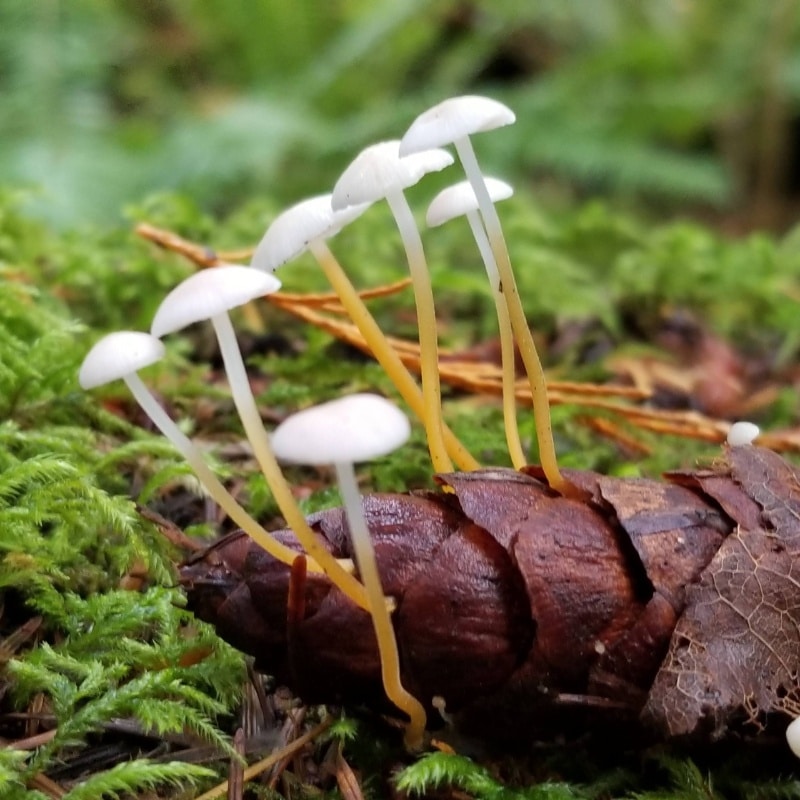
Conifercone Cap (Baeospora myosura)
This is another tiny mushroom commonly found fruiting on spruce cones. However, it has gills, not teeth, and is much lighter colored than the pinecone mushroom. It is also not hairy.

Purple Edge Bonnet (Mycena purpureofusca)
The purple edge bonnet also grows on pine cones and could be confused with the pinecone mushroom. This mushroom, however, has a cone-shaped to bell-shaped cap, instead of a circular one like the pine cone mushroom. It is also darkly colored and can range from purplish-brown to reddish-brown. It has gills under the cap, though, and is not hairy.

Spruce Tooth (Bankera violascens)
The spruce tooth also has spines under its cap instead of gills or pores, and it grows on spruce cones. This makes it easy to confuse with the pinecone mushroom. There are some key differences, though. It has a much, much larger cap, a centrally attached stem, and lilac-colored flesh. Overall, it is more purplish to purplish-brown than the pinecone mushroom, which is reddish-brown in color.
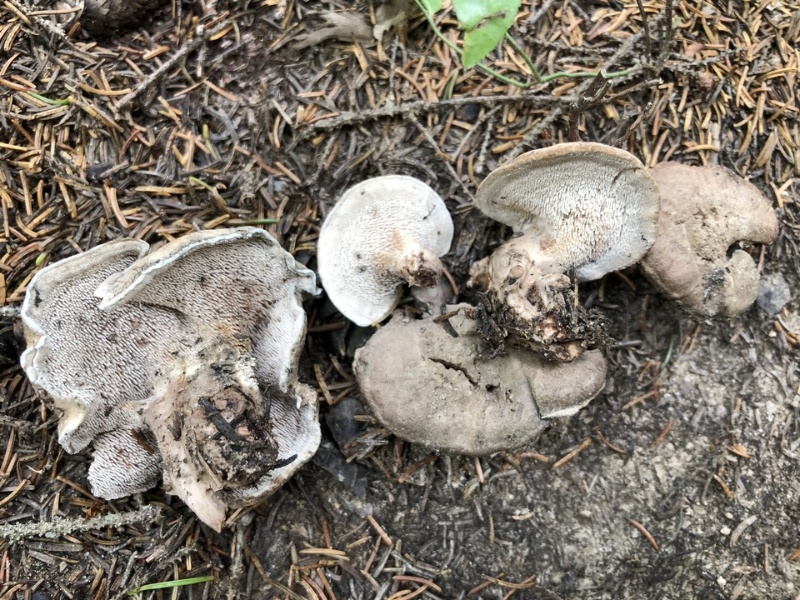
Ecological Role of Pinecone Mushrooms
These tiny mushrooms contribute significantly to forest health. The pinecone mushroom is a saprobic species, meaning it obtains nutrients by breaking down non-living organic matter. In this case, it specifically breaks down pine cones. Auriscalpium vulgare decomposes fallen cones from various conifers. It is especially good at breaking down lignin and hemicellulose in freshly fallen cones.
During decomposition, Auriscalpium typically colonizes newly fallen cones first, while other fungi like Strobilurus appear later on highly decomposed cones.
Through the decomposing process, these mushrooms release nutrients locked inside pine cones back into the soil. Without decay fungi like Auriscalpium vulgare, plant remains would accumulate, which would reduce soil fertility and have a serious impact on habitats.
A study in northeast India found that Auriscalpium vulgare likes to fruit on burned cones of Khasi Pine. And, the number of fruit bodies that appeared on unburned cones varied in size based on the cone girth. The bigger the cones, the bigger the pinecone mushrooms.
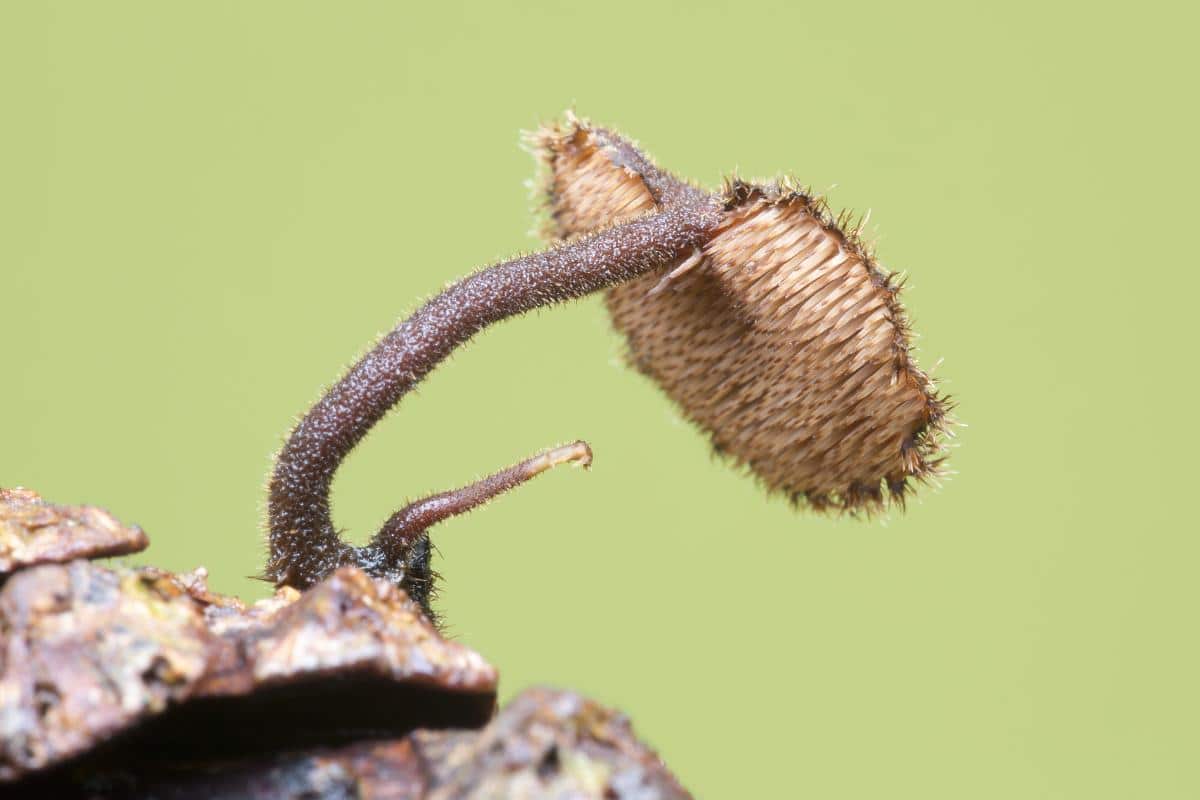
Pine Cone Mushroom Edibility
Pinecone mushrooms are not considered edible. The primary reason is because of their incredibly tough, fibrous texture. Even if you were determined to eat them, their tiny size makes them impractical for harvesting. Plus, these mushrooms offer little culinary interest since they don’t have a distinct taste or odor.
Interestingly, there is a history of these mushrooms being eaten. An 1887 textbook claims that pinecone mushrooms were “commonly eaten in France and Italy“. This is the only known reference to eating the pinecone mushroom, and due to confusion with common names, it is unknown if they were referring specifically to Auriscalpium vulgare. However, it could be, and the now commonly agreed upon inedibility may be due to changing culinary practices.
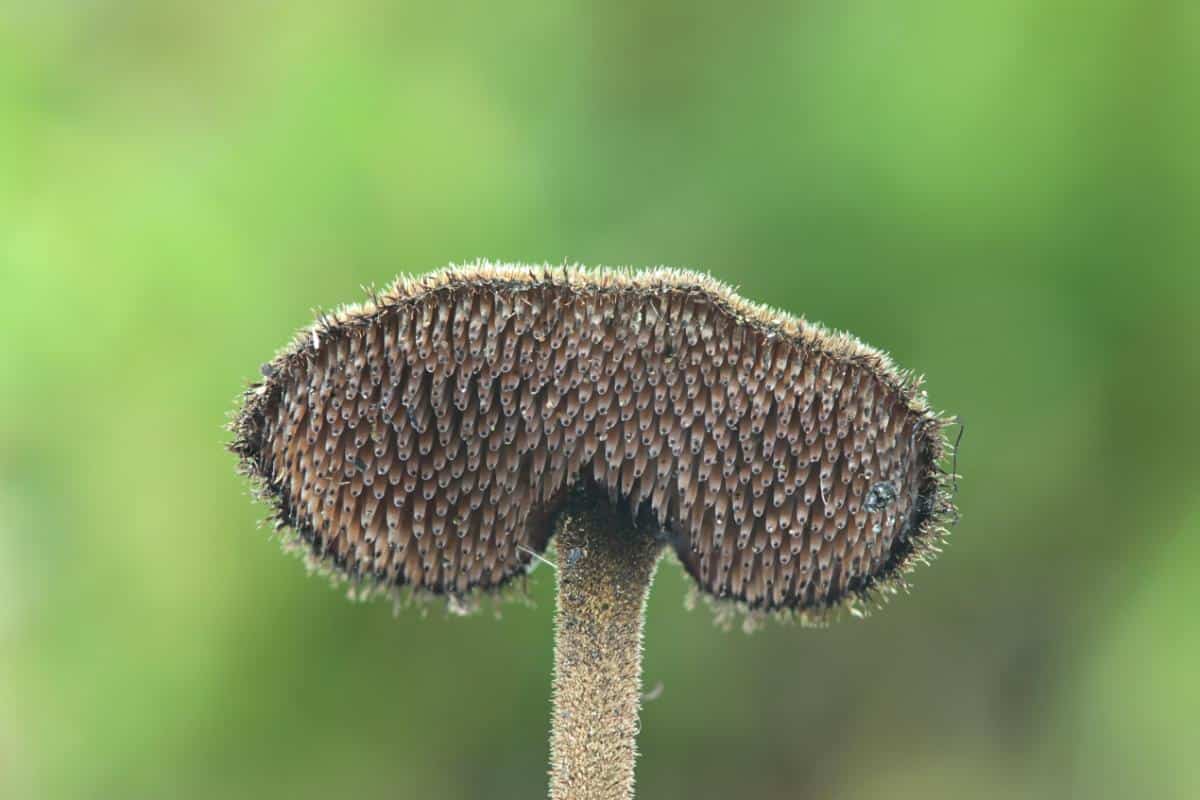
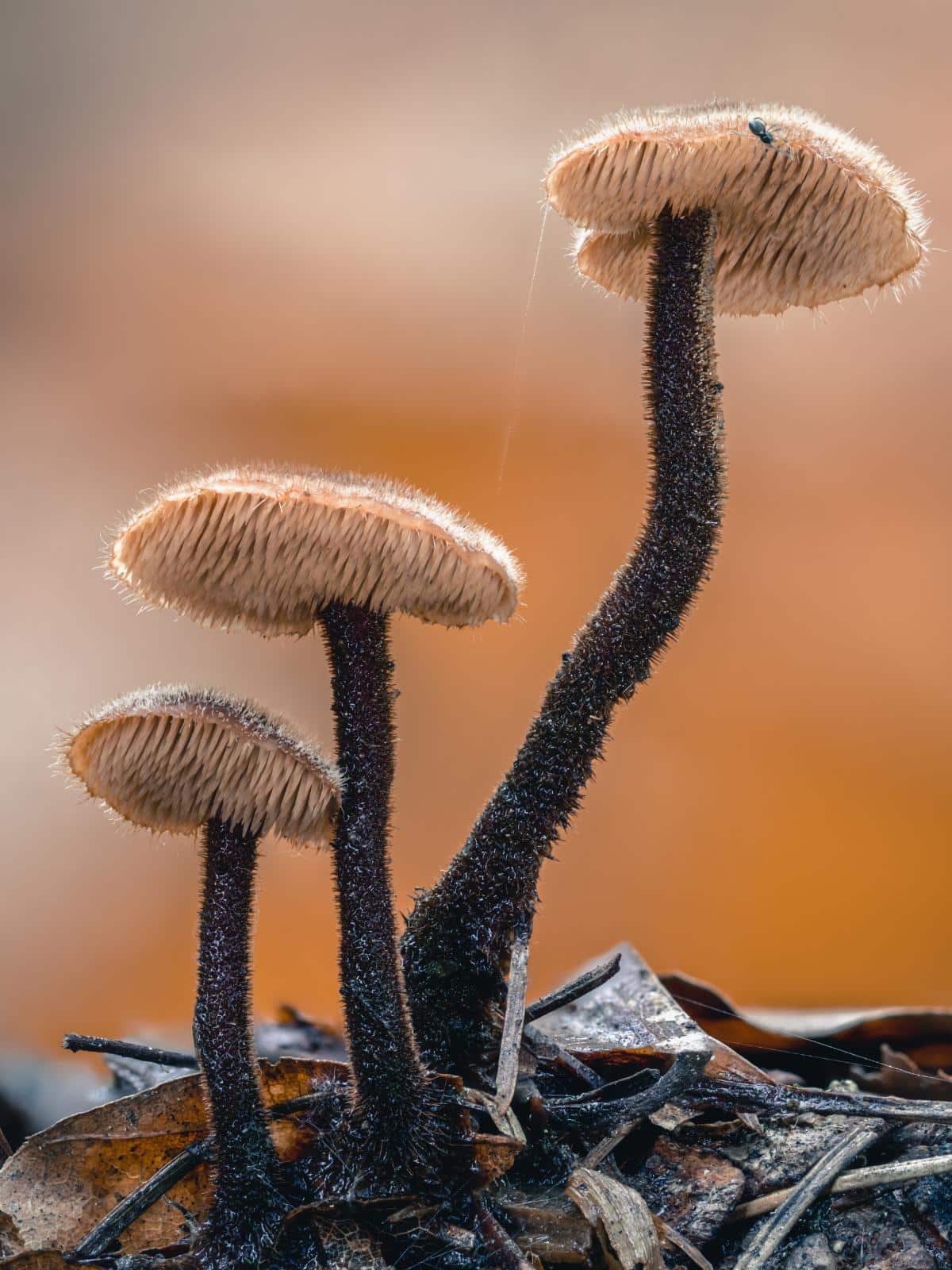
Common Questions About Pinecone Mushrooms
How can I identify pinecone mushrooms in the wild?
Pinecone mushrooms (Auriscalpium vulgare) are tiny, grow on pinecones, and have a distinctive kidney-shaped or circular cap that is covered in fine reddish-brown to dark brown hairs. Look for them growing directly on buried conifer cones.
Where and when are pinecone mushrooms typically found?
These mushrooms are commonly found in coniferous forests. They grow on the cones of pines, Douglas-fir, and spruce trees. They typically appear from late fall through early winter and grow on partially or fully buried cones.
Are pinecone mushrooms edible?
Pinecone mushrooms are not considered edible due to their tough, fibrous texture and lack of distinct taste or odor.
What ecological role do pinecone mushrooms play?
Pinecone mushrooms are important decomposers. They break down fallen conifer cones and recycle nutrients back into the forest ecosystem. Their presence can serve as an indicator of the overall health of the forest.
Do pinecone mushrooms have any medicinal properties?
While research is ongoing, pinecone mushrooms have shown potential for antimicrobial properties. Compounds derived from these fungi have applications in agriculture for crop protection. They may contribute to the development of natural remedies.

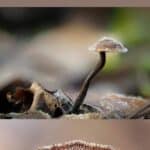
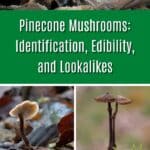
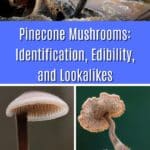
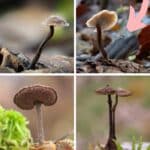
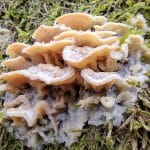

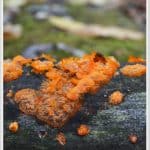
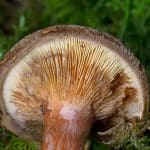
Leave a Reply